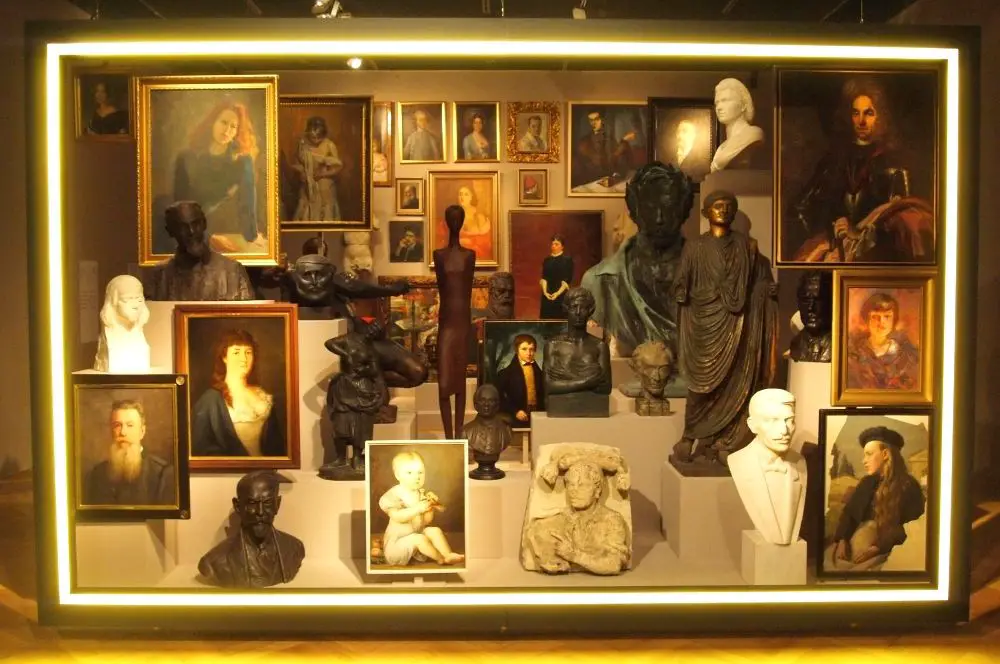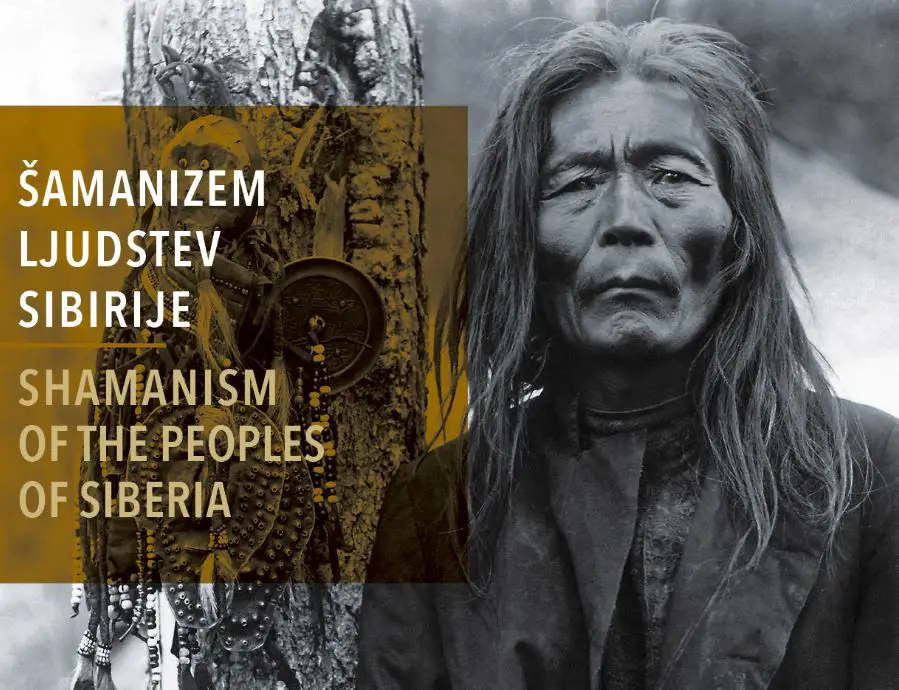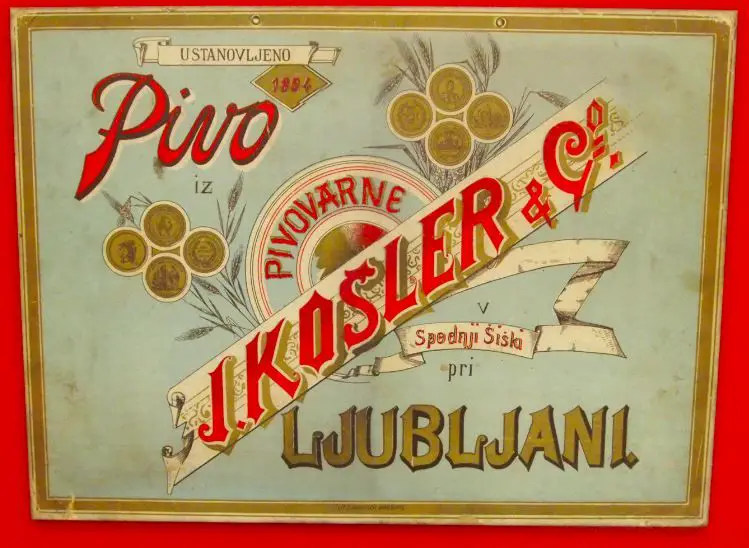Lifestyle
STA, 23 May 2019 - Climate change is bringing some major challenges for tourism, with skiing being among the sectors already suffering substantially under its impact. Participants of the Green Day of Slovenian Tourism conference heard on Wednesday that the number of ski destinations in the Alps with sufficient natural snow could drop by 70% in this century.
Talking about the impact of climate change on ski resorts at the annual conference promoting sustainable tourism was Cenk Demiroglu of the Umea University in Sweden, who said the number of skiers in the US had fallen by 15 million between 2000 and 2015.
Revenue in the sector in the US fell by US$1 billion in the same period, while the number of jobs lost is estimated between 13,000 and 27,000.
Future prospects are also bleak, as some resorts in the US will see their season shortened by 50% by 2050 and by 80% by 2090. This entails the number of skier falling by 25 million and revenue by US$ 2 billion.
Similarly worrying forecasts are coming from the Alps, where the projected rise in global temperatures by 4 degrees Celsius by the end of the century would reduce the number of resorts that can rely fully on natural snow from 666 to 202.
While conditions could improve for some resorts, many would no longer be able to operate even with artificial snow, Demiroglu warned, while also noting that artificial snow required a lot of water.
Climate change will also be felt by Slovenia, Renato Bertalanič of the Slovenian Environment Agency said. He said the number of hot days will be rising and they will also be recorded at higher altitudes. The most pessimistic projections suggest the number of snow cover days could decrease by over a month.
Economy Ministry State Secretary Eva Štravs Podlogar added that Slovenian ski resorts are already having to supplement their operations with strong and attractive summer programmes. Only two resorts, Vogel and Kanin, are operating without artificial snow, she noted.
Štravs Podlogar also explained that the ministry, in cooperation with mountain resorts, recently ordered a study on ski resorts. The results are expected to be in by the end of the summer.
May 22, 2019
With the European parliamentary elections approaching it is perhaps appropriate to look back in time at the polity that used to rule these lands in the late Middle Ages, when “nations” didn’t exist, and the rising Ottoman Empire was the main external threat to the ruling families of the Holy Roman Empire.
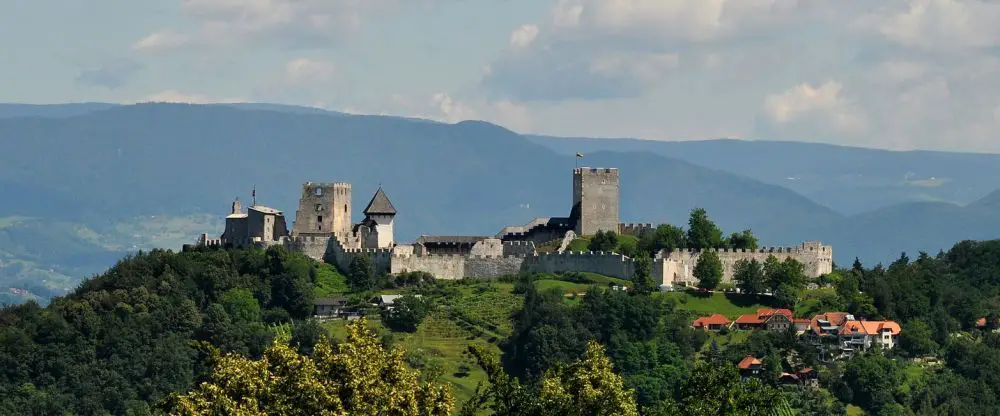
One of the most successful feudal families that emerged in the present-day Slovenia and seriously challenged the dominance of the Habsburgs were Counts of Celje (GER: Grafen von Cilli), who were elevated to the rank of Princes in 1436, following a successful series of military campaigns and the marriage policies of Hermann II.
Hermann II, who is mostly known to Slovenian historic memory as the person who killed his daughter-in-law Veronica of Desenice, managed to establish a relationship of trust with King and later Emperor Sigismund of Luxemburg, expand his family’s territories from Styria deep into the Balkan and set the stage for his grandchild Ulric II to attempt to take the Hungarian throne. With Ulric’s death, however, the male line of the Counts of Celje was extinct and their estates went to the House of Hapsburgs, who were in a mutual inheritance contract with the House of Celje.
Hermann II and his political ambitions
In 1388 Hermann II arranged the marriage of his first born son Frederick III with Elisabeth of the Frankopans, both babies at the time. Hermann’s goal was to establish a principality – a political entity subservient directly and only to the King. The marriage with the Frankopans, a Croat noble family, would help ease resistance in Slavonia that started to build up against the House of Celje due to its expansion into the Balkans. He also managed to secure a generous dowry that Elisabeth brought into the family, which included several estates in Kvarner on the Adriatic coast.
While the engaged were growing up, each with their own families, Hermann II made a smart move by joining King Sigismund of Luxemburg in his 1396 Crusade of Nicopolis, which was to save Constantinople and Byzantine Empire from the Ottoman Turks. During the campaign he saved Sigismund’s life and the King promised him to marry his daughter Barbara in return. Through this marriage, Barbara, once old enough, became the Empress of the Holy Roman Empire after Sigismund was elected Emperor in 1433.
Frederick II of Celje and Veronika of Desenice
The plans Hermann II had for oldest son, Frederick II, however, didn’t go as he envisioned. When Elisabeth and Frederick were finally married in 1404 or 1405, they did not get along very well. Elisabeth gave birth to two boys, Ulric II and Frederick III, the latter dying in early childhood. The couple lived separately from 1415 until Elisabeth’s suspicious death in 1422. How and where Elisabeth died is not very clear. According to one of the stories, especially popular among Frankopans who wanted Elisabeth’s dowry back, Frederick II strangled her so that he could get married with his mistress, Veronika of Desenice.
Before Elisabeth’s death, Frederick met a girl from a lower class in the village of Desenice and fell in love with her. In 1424 or 1425 Veronica of Desenice and Frederick II of Celje got married, and Frederick built a Friedrichstein castle above Kočevje, where they would presumably live happily ever after.
With this marriage he fell out of favour not only with the Frankopans, who took back control of the territories that had been included in Elisabeth’s dowry, but also his father Hermann II, whose political achievements he wasted, and the Hungarian court under King Sigismund, who felt obligated to his father.
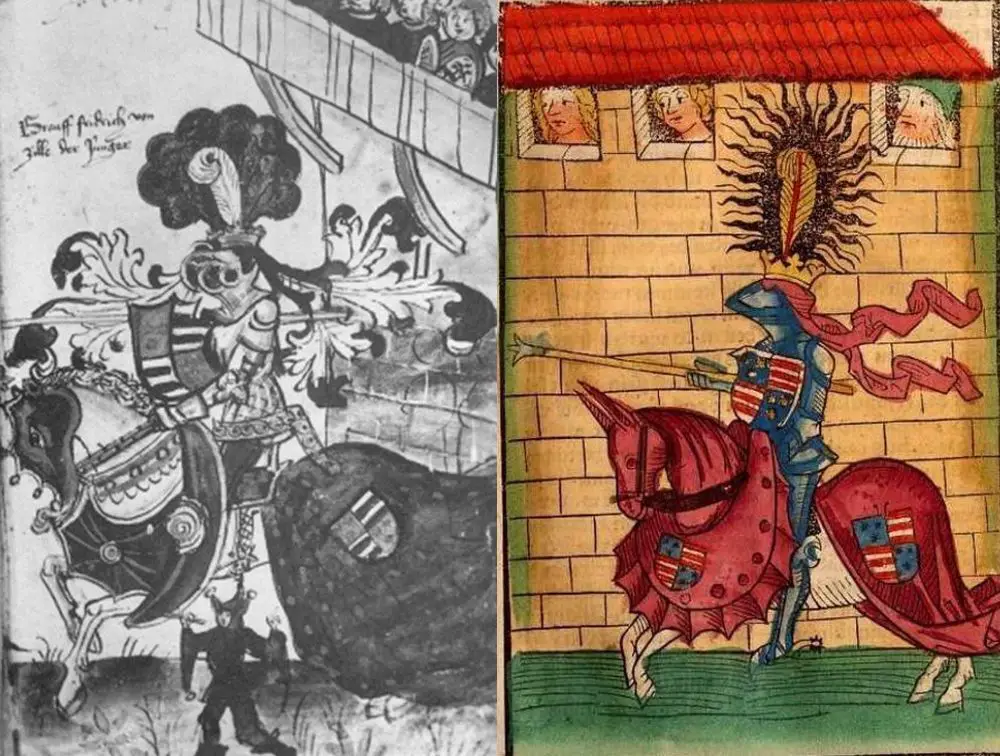
In 1425 Frederick II applied for asylum in Venice, claiming that his father and the Hungarian court were attempting to kill he and his wife, but the senate of the city state turned him down. Somehow King Sigismund managed to lure Frederick to his court where he was captured and handed over to his father, who threw him in jail and demolished Friedrichstein Castel.
Veronica was hiding in monasteries and forests until she was captured as well. In order to clear his son’s name in front of other noble families, Hermann headed to court accusing Veronica of witchcraft. He failed, the court found her not guilty. Hermann II then jailed Veronica in Ojstrica castle where she was drowned in a tub by Hermann’s guard on October 14, 1425.
Frederick, however, didn’t stay in prison for very long. In 1426 his only remaining brother Hermann III died. The only heirs of the Counts of Celje now were Frederick II and his son Ulric II, so Hermann II released his son from jail.
Principality of Celje
The relationship between Hermann II and Frederick II smoothed a little, but the two remained rivals. Hermann II was now reluctant to entrust Frederick with management of the family estates. In 1429 Frederick was given the title Count of Zagorje by King Sigismund of Hungary, something Hermann probably opposed. In 1435 Frederick II rebelled against his father by demanding concessions from the Hungarian King, now also the Holy Roman Emperor, , placing Sigismund in the middle of the dispute he had with his father. These trouble stopped with Hermann’s death. On November 30, 1436, Frederick II and Ulric II were elevated to the ranks of Princes, which came with power granted to them over jurisdiction, currency production and mining.
The Princes of Celje now became legal contesters for the Empire’s crown, which endangered the unity of the Habsburg estates. Between the years of 1436 and 1443 a war ensued between the two families. Although the House of Celje proved stronger in the battlefield, they had to accept the ceasefire as by then Frederick III of the Habsburgs was already crowned a King. In 1443 a mutual inheritance contract was signed by the two families in case of dynastic extinction.
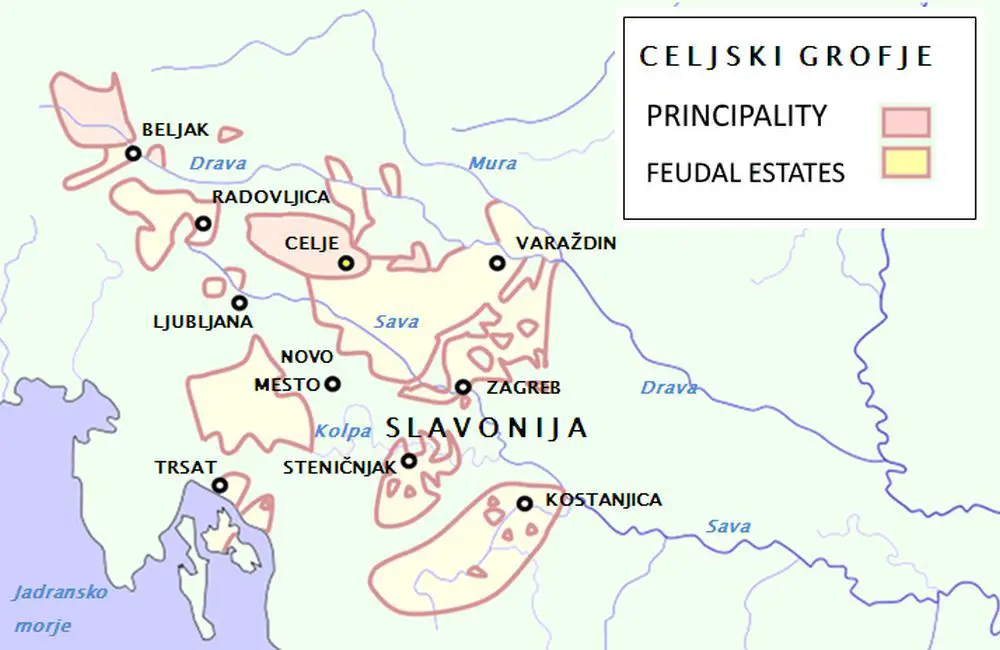
Meanwhile, Sigismund died in 1437, which triggered the succession crisis for the Hungarian crown. Ulric II entered the intrigues that followed, and Frederick II helped by engaging in diplomatic missions, mobilizing the family’s vast connections abroad. Frederick II died in 1454, and a year later second Ulric’s son died as well, rendering Urlic II the sole surviving heir of the House of Celje.
The end of the House of Celje
In 1456 Ulric II was assassinated by the rival House of Hunyadis from Transylvania, while accompanying Hungarian King Ladislav to Belgrade. This meant that the House of Celje was extinct and according to the mutual inheritance contract, Habsburgs became legal heirs of their estates, setting the stage for the Austrian Empire.
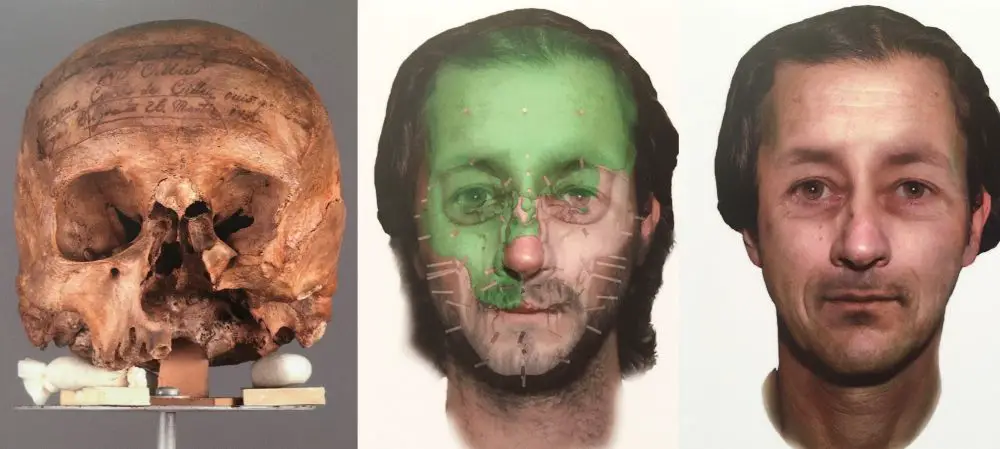
STA, 19 May 2019 - Slovenia has the worst draft energy and climate plan among all EU member states, according to a report by NGOs that highlights lack of ambition and credibility and absence of a clear path to carbon neutrality by 2050.
In the report Planning for Net Zero: Assessing the draft National Energy and Climate Plans, the European Climate Foundation looked at how credible national goals are, how comprehensive and detailed policy proposals are, and how good the drafting process was.
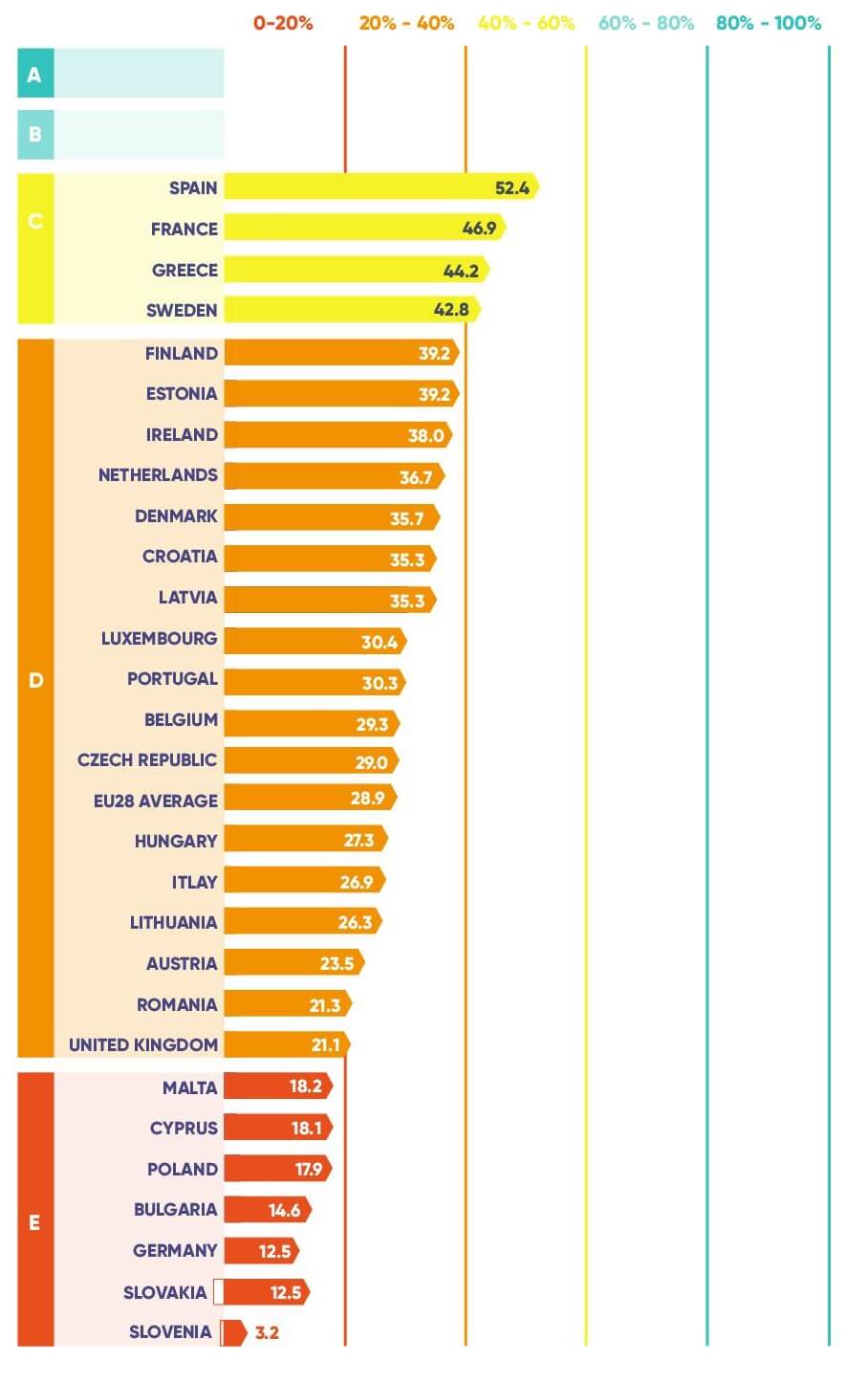
A graphic from the report (a link to which is at the end of this story)
Slovenia performed dismally across all areas, getting only 3.2 out of a maximum of 100 points; the second worst performed, Slovakia, got 12.5 points, while the best performers got over 40.
Focus, the Slovenian NGO that published the report, said the score showed "a carbon neutral economy will not just happen automatically, it requires being goal-oriented and planning accordingly."
All member states, but Slovenia in particular, must improve the plans in the coming months; the final versions are due by the end of the year.
Slovenia's draft plan was drawn up by the Ministry of Infrastructure. One of its main aims is to reduce carbon emissions by 25% by 2030 compared to 2005.
A PDF of the full report can be found here
Ljubljana’s gourmet burger scene is a strong and growing one, with both dedicated restaurants and pop-up festivals dedicated to bringing the best out of simple ingredients. One such place is the Hood Burger chain, which started as a humble stand in front of Sax Pub, Ljubljana, in 2012.
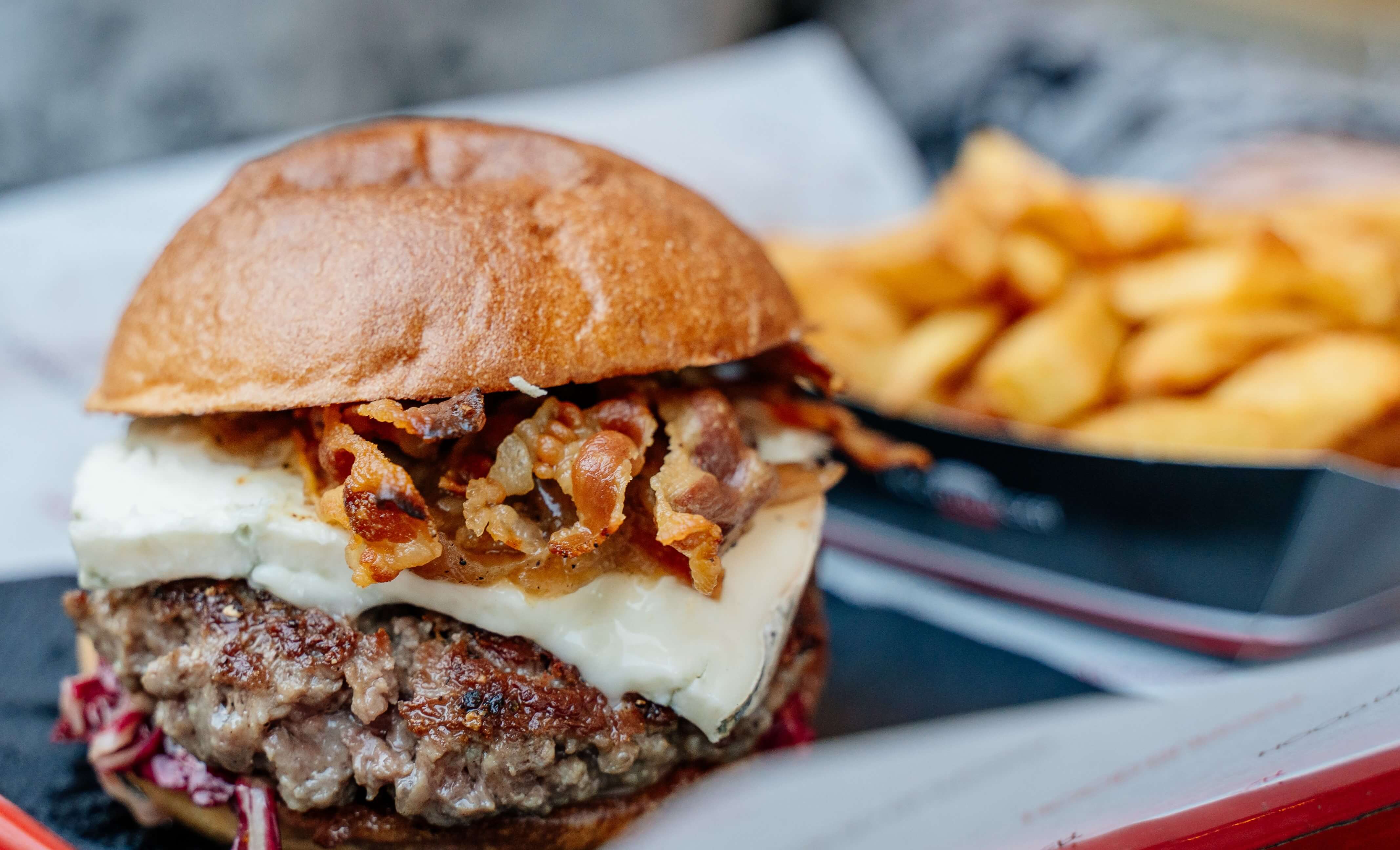
The Lady Marmalade: "Voulez-vous manger avec moi, ce soir?"
The concept of high quality ingredients served with respect found immediate favour with customers, with the owners, Til Pleterski and Klemen Ptičak, opening their first permanent location in Vič later that same year. Since then the company’s gone from strength to strength and now boasts four locations, three in Ljubjljana (Vič, BTC and Nazorjeva Street) and the latest in Celje (at Prešernova ulica 10, Celje).
To mark the occasion, do some good for the local community and underline the chain’s commitment to fine ingredients and innovation, Hood has announced a new product, available for just 12 days, the intriguingly named Lady Marmalade. But the name is far from the most interesting thing about the latest addition to Hood’s short menu of burgers, fries, chicken, shakes, sodas and beers. It’ss a collaboration with the chef Janez Bratovž, the doyen of Ljubljana’s fine-dining scene and the man behind the initials of JB Restavracija. In short, not someone to throw ketchup on a burger and be done with it.
As Janez said at yesterday's launch:
When the boys invited me to participate, I was honoured, even more so when I learned that it was for a good cause. I immediately had a basic idea in my head, and then with Til and Klemen, who are truly burger experts, I have developed and supplemented it, so I am very happy with the end result. The rise of street food like this is a reflection of the fact that we live faster, we do not have one hour for lunch, but the quality of street food is thus very important. Hood Burger provides this. Til and Klemen take food, and really make sure that the bread, meat and other ingredients are top-quality.
The item itself is described as a sophisticated burger, both strong and gentle, and I’d just say it was delicious, as I discovered at the launch last night. The tasty bun and burger, the latter produced using Hood’s standard smashing technique, is complimented by a thick slice of Lombardy gorgonzola, a jam flavoured with Brda Merlot, some thinly sliced radicchio, enriched with a custom vinaigrette dressing, along with some onions and crisp pancetta – a taste of the Karst region you can hold in your hand, and one that goes equally well with a glass of Bevog or Union
Related: Ljubljana Burgers – the case for Hood
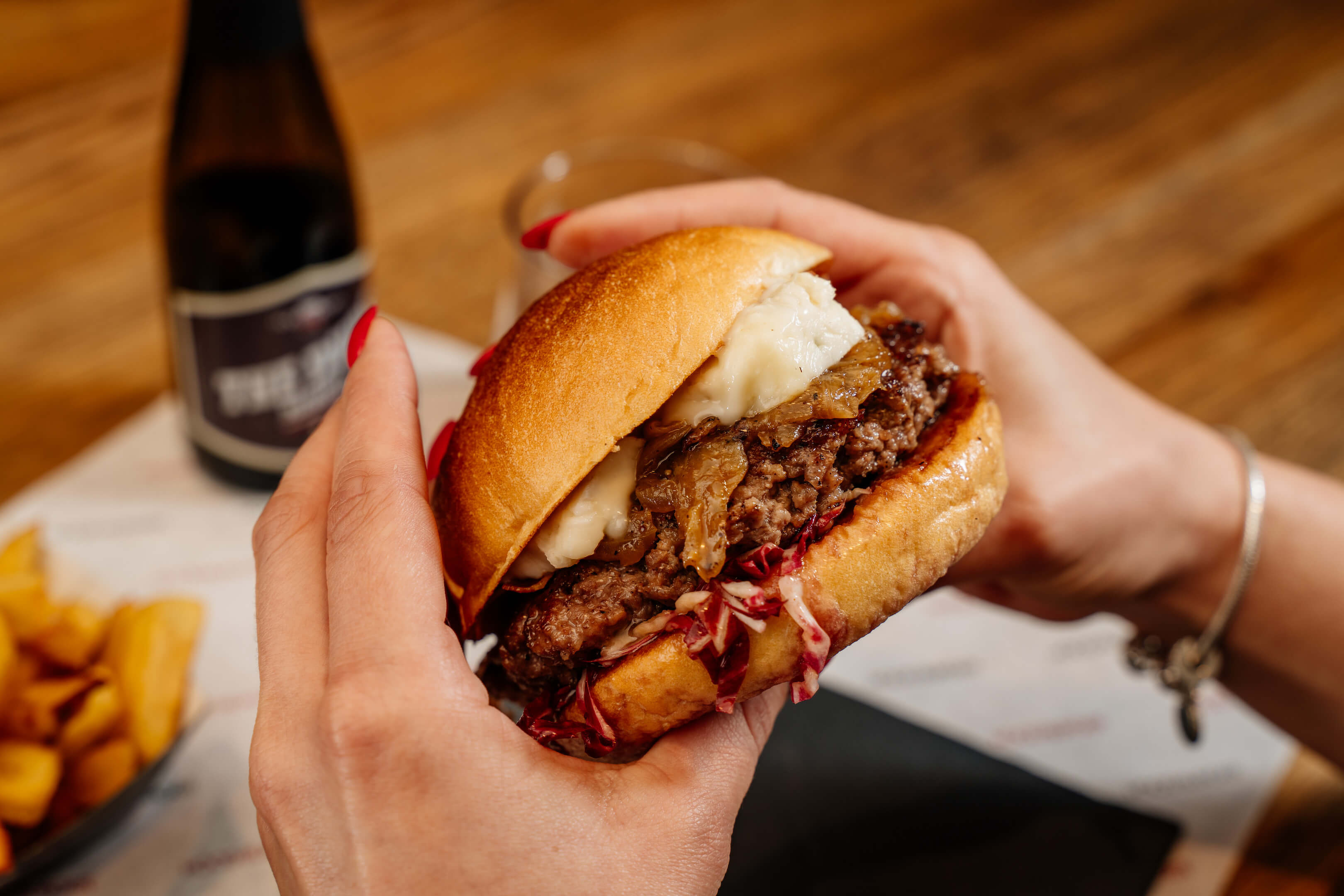
What’s more, from each one sold Hood is donating €1 to the Gynaecology and Maternity Department of the General Hospital Celje. There’s thus no reason to feel guilty the next time you pop out for a burger, as it’ll both taste good and do good, while enabling you to say, in all honesty, that yes, you’ve eaten food by Janez Bratovž.
The Lady Marmalade burgers will be on the menus of all four Hood locations from today until June 2, so catch them while you can.
STA, 21 May 2019 - Debates have been raging on for years about whether schoolwork is stressing children out. A study commissioned by the National Education Institute appears to show that Slovenian school children are exposed to stress, progressively so as they get older, but to a much lesser degree than widely assumed.
The study measured self-reported stress levels in over 8,300 children in sixth and eighth grade from 269 primary schools. Their average stress level was 37.5 on a 15-75 scale, well below the mean value.
"Children are telling us that things we find potentially tasking are not such a great burden for them," Tanja Rupnik Vec, one of the authors of the study, told the press on Tuesday.
Nevertheless, the study shows that stress increases with age, with eighth-grade children reporting higher stress levels than those in sixth grade.
Grading is the biggest source of stress together with the large number of subjects, whereas relations with teachers and other children, parental expectations and extracurricular activities are not a significant source of stress.
The study also examined how stress affects students. It found that negative consequences are rare on average, with the exception of fatigue, inability to concentrate and tension, which is two-thirds of students experience frequently.
Boys respond to stress with negative behaviour, while girls are more likely to react with insecurity, anxiety and loss of appetite.
Another major issue the study looked into was workload, especially homework, in the wake of a petition launched earlier this year that gained a lot of traction by proposing a radical reform including elimination of grades and homework.
The results show the vast majority of children, almost 56%, spending less than half an hour a day on homework, with another almost 30% doing homework for up to an hour. Almost two-thirds of students study less than an hour a day, except before tests.
Most children have been shown to have plenty of time for mobile devices, with almost 28% using them up to 30 minutes per day, 30% up to an hour a day and almost a quarter from one to two hours per day. Only a quarter of students use mobile devices to search for school-related information.
The survey was designed in conjunction with the Ministry of Education, which plans to use it as an input for a White Paper on education.
Slovenia’s IPoP (Inštitut za politike prostora, the Institute for Spatial Policies) and TAM-TAM Institute have announced the winner of an international poster design competition on the theme of pedestrian-friendly cities of the future, under the title of Cities for Pedestrians! The contest called for images that would remind people that there are many reasons to choose walking as a mode of transport. In addition to the direct health benefits of physical activity, walking is a form of sustainable mobility that’s especially appropriate for urban environments,, because of the accessibility of food and service.
The competition attracted 159 entries, 95 of which came from outside Slovenia. Twenty-seven of these made it to the shortlist, and will be on display from the middle of June at the Pesec online gallery, all available for use Creative Commons licenses. Then in September a selection of these works will appear in a pop-up gallery in Ljubljana, as part of European Mobility Week 2019.
The winning poster was produced by Andrea Machara, from Spain, and will be from the end of May on 50 of TAM-TAM’s poster locations in eight Slovenian cities. As the President of Competition Jury, Žare Kerin, said of Machara’s work, called “Hodite” (“Walk”):
While evaluating the works, the jury respected three criteria as the most important: communication value, creativity and visual excellence. The winning poster subtly and wittily shows many advantages of walking in the city: on the cross-walk we see how pedestrians are meeting one another, some of them are even dancing, a young family is running errands, a student is racing to a lecture … The stylised figures provoke the viewer’s imagination, enticing one to attribute stories and with that make one more strongly aware of the positive and pleasant side of experiencing the cities for pedestrians.
STA, 20 May 2019 - Reviving the new national library project that has been in the planning stages since 1989 and last saw a seven-year hiatus, Education and Science Minister Jernej Pikalo signed on Monday an annex to the contract for the building's design documents. Estimating the entire project at EUR 50 million, Pikalo expects the funding sources will be mixed.
Signing the annex with the Bevk Perović architecture bureau, which won the competition for the new building in 2012, the minister did not wish to risk a prognosis on when NUK II, meant to supplement the existing library, would be built.
He said the annex was an important step, but added "we will only be happy when the building actually stands".
Pikalo, who hopes that the building permit can already be obtained next year, pointed out that the new National and University Library had already been in the making for years.
While the presently valid systemic act for the project was adopted in 1994, plans for the building, located on an archaeological site, go back even further.
In a 1989 competition the design of architect Marko Mušič was selected for the building, but later dismissed as outdated.
After almost EUR 30 million spent on preparations, the then government decided in 2009 to end all contracts related to the project and published an international competition in 2011, which was won by Bevk Perović Arhitekti.
The costs of the design documents amount to roughly EUR 2 million. With EUR 350,000 already paid for the conceptual design in 2013, the value of the annex singed today is about EUR 1.6 million, Pikalo said. EUR 200,000 were contributed by the Culture Ministry while the rest falls under the Education, Science and Sports Ministry.
The value of the entire project is EUR 50 million. Pikalo, who believes this is the start of a long but right path, said there were different possibilities of financing.
One would entail changes to the 1994 act, another option are EU funds and yet another the funds from the so called Juncker Plan or the European Fund for Strategic Investments. In the end, the sources are bound to be mixed, the minister announced.
Pikalo spoke of a dynamic and activities-based new library that would provide more room for exchange of views and for cooperation.
The 2012 jury described the Bevk Perović design as one that does not consider only the architectural and archaeological context of the building, but presents the new library as the focal point of the network of university facilities and the city's life as a whole.
Bearing in mind the needs of the majority users of the new library, students, the authors opened up the building to the Ljubljana Faculty of Arts, by placing the main entrance to the side of the building facing the faculty.
The other entrance to the library connects the building with the old National and University Library, built in 1941 on the basis of a design by Slovenia's most celebrated architect Jože Plečnik (1872-1957).
May 19, 2019
While staying awake to the end of the Eurovision Song Contest is too much of a challenge for some, others gain in excitement as the show progresses, with casting votes and adding the points being the highlight they’ve been waiting for.
Although the Eurovision Song Contest was established as an entertainment and politics-free event that would bring Europe together, it has never avoided being heavily influenced by regional geopolitical factors throughout the voting or even in songs themselves. In 2016, for example, two years after Russian annexation of Crimea, Ukraine won the contest with a song about the deportation of Crimean Tatars by Stalin’s Soviet Union, sparking protests from Russia. This year, on the other hand, the Icelandic group Hatari displayed Palestinian flags in Tel Aviv during the popular vote announcements, sparking anger from the production staff, who demanded the flags be handed over to them as objects of political statement are not allowed on the premises of the competition.
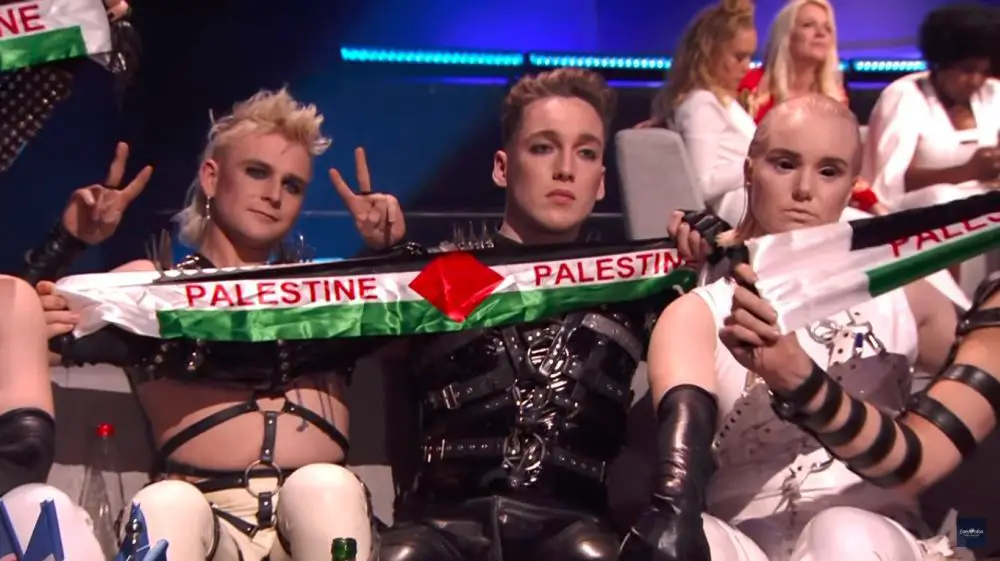
"Give me palestine flag" so we can pretend they dont exist. #HATARI #12stig #Eurovision pic.twitter.com/szBh0PdfiI
— Stefán Ágústsson (@stebbisnaer) May 18, 2019
Even if we move past these singular events, it has been observed that countries of particular regions, for example the Balkans or Scandinavia, tend to exchange votes for songs among themselves – as do Greece and Cyprus, Belarus and Ukraine – unless something really spectacular is put on stage, such as this year’s Australian princess Elsa “flying” on a long stick. But since the songs tend to address as big an audience as possible, Eurosong acts are quite bland in general, which allows political divides to show.
So how did Slovenia vote this year?
Since voting is divided between the jury, which gives 50% of the vote, and popular audience, who gives it the other 50%, the results come in two separate columns:
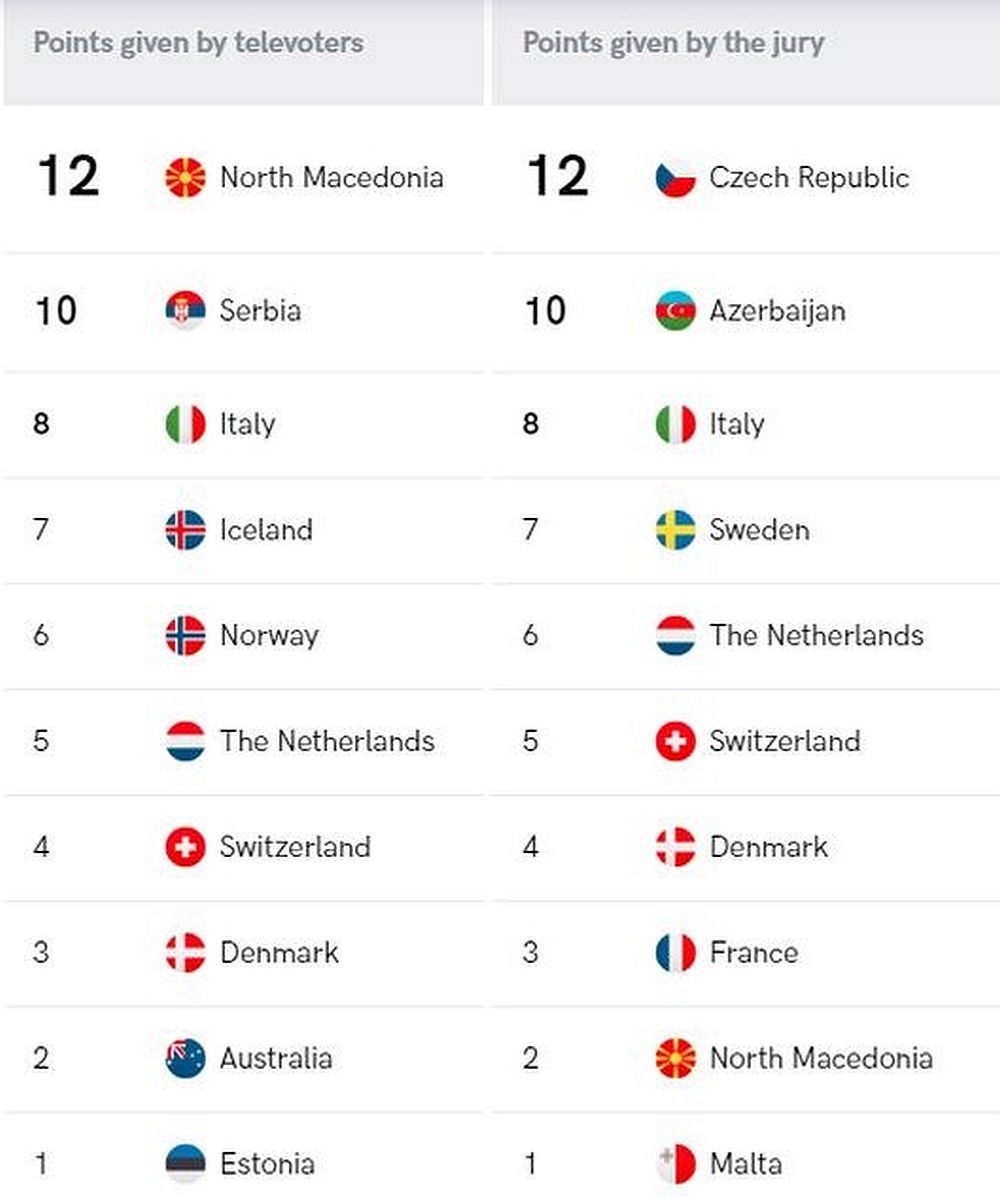
Source: Eurovision.tv
Although some of the middle range of the countries chosen by the jury and the popular vote look similar, the top two suggest that the popular vote decided for some regional bonding, while the jury seems to have had things other than Yugoslav friendship in mind when deciding which song to award with 12 and 10 points. Also, we can see that the jury might have been playing safe and conservative when deciding whom to award points. Most notably we can see the jurors skipped goth-techno band Hatari from Iceland, but also Australia, whose performance was also quite unique, although perhaps meant for a different age group than Iceland’s bondage spectacular. Both of these countries were nevertheless awarded with points from the popular vote and so was Norwegian dance banger.
If you're not in town for the week of this guide (20 - 26 May, 2019) then you can see all the editions here, and if there's event you want to promote in a future edition of What's on in Ljubljana please get in touch with me at flanner(at)total-slovenia-news.com or try and find me on Facebook. As ever, links to venues are after the following selections…
In town and want to follow the news? Check out our regular morning headlines for Slovenia here.
Kinoteka has a week of Italian movies, with the schedule here (check the dates, as the link takes you to whatever the current week is).
Tuesday, 21 May, a centenary of Slovenian ballet will be celebrated at Cankerjev dom with an international ballet gala.
Wednesday evening, from 18:00, you’ll hear a live brass band making it’s way up and down the river.
Slovenia is a climbing nation, both alpine and sport, and you can get a feel for the latter on Saturday, 25 May, with free to view Triglav, the Rock Ljubljana international bouldering competition, taking place in Kongresni trg from 13:00 to 22:00,m with the world's best sports climber, the Slovene Janja Garnbret, due to taka part.
Every night, in various spots around town, you’ll see some interesting light-based art installations, as part of Lighting Guerilla. While I found the display around Križanke a little disappointing compared to last year, that doesn’t mean you won’t enjoy it. Look out for little round tags on some installations which indicate some touching is needed.
With regard to clubs, K4 is celebrating its 30th anniversary this year, with a documentarmy made for its 15th shown above. The big day is really May 25, but the 30K4 Festival begins Friday, 17 May and runs until the 31st.
The weather’s getting better, so the number of outside events and performances is increasing. This Saturday and continuing through the summer are two art markets. ARTish is in Gornji trg square, the far end of the Old Town, where you can buy works from Slovenian artists (09:00 – 18:00). Around the same time, but ending 16:00, there are more local artists along the nearby Breg Embankment, on the other side of the river, under the banner of the Ljubljana Art Market. (While Sunday mornings, same location, see the regular flea / antique market. There's also the famed food market Open Kitchen, every Friday 10:00 to 21:00 in the central market - it's lively, with a good mix of locals and visitors, and even if you're not hungry you'll enjoy it (but go hungry).
Volčji Potok Arboretum (Volčji Potok 3) has a rose garden in bloom until 31 August, nature permitting.
- Cinemas and films
- Clubbing
- Live music
- Theatre and dance
- Harm reduction and drug testing
- Things to do with children
- LGBT+ Ljubljana
- Ljubljana Castle
- Museums and galleries
- Other things to do in Ljubljana
- Daytrips
- Getting around & miscellaneous
Cinemas and films
You can read about all the cinemas in town here, while a selection of what’s playing this week is below, and note that kids' movies tend to be shown in dubbed versions, while non-English language movies for older viewers will have Slovenian subtitles.Parents should also pay attention to Kinobalon, which is Kinodvor's regular weekend series of film screenings and events for children, from babies on up, with special parent/child events, "first time in a cinema" screenings, and babysitting. Learn more about it here, and see the current schedule here.
Kinodvor –This is an arts cinema, not far from the train station, that shows new features as well as hosting the occassional festival.
Kinoteka – And not far from Kinodvor you can find this revival cinema, which shows art house classics along with some deep dives in the archives.
Kino Bežigrad - A relatively small theatre, but one which usually has the biggest of the new releases.
Kolosej -The multiplex out at BTC City Mall shows all the big movies, with well over a dozen titles on the schedule, although note that there are far more movies than screens, so some of the older ones mayonly be playing once or twice a week.
Komuna – The cinema in a basement behind Nama department store shows two or three different features a week, usually including the biggest titles.
Clubbing
Compared to some European capitals it can seem that nightlife in Ljubljana ends rather early, especially along the river, but there are still bars that stay open late and clubs were you can dance until dawn, and perhaps the best place to stumble across something interesting is the legendary Metelkova. Be aware it's a grungy kind of place and not for all tastes, but also that there's considerable variety to found within the various clubs there, from death metal to electropop, gay cabaret to art noise. You can read "the rules" of the place here. And if you're curious about how the place started then read our story, and look at some pictures, about last year's 25th anniversary.
Božidar - DJ events aren't too common here, but when they happen they often have a big name.
Channel Zero – DJs shows here include regular dub nights as well as electronic music.
Gala Hala – Another Metelkova venue, you can sometimes hear bhangra and Bollywood here, but more often funk, hip hop, breakbeat and so on.
Klub Cirkus – The more commercial end of clubland, and a venue that aims to serve the student party scene. Expect house, anthems, and bangers.
Klub K4 – The home of techno, old and new, along with various other electronic genres,
Koncertna Dvorana Rog– There are irregular DJ sets at this underground (not literally) venue at the far end of Trubarjeva cesta, and they range from techno to goa to drum'n'bass.
Orto Bar– 80s and 90s throwback nights can often be found here, along with rock-based DJ sets.
Live music
Balassi Institute – Free Hungarian music, when available, from the Hungarian cultural institute just a short walk downriver from Dragon Bridge.
Cankerjev dom – The main arts venue in the country hosts classical, opera jazz, folk and occassinally pop.
Cvetličarna – Regional pop and rock concerts can be found here.
Channel Zero – This Metelkova venue sees live shows from punk and rock bands, as well as others.
Gala Hala – Another Metelkova venue with indie bands of various styles.
Kino Šiška – One of the top live venues in the city, with a varied programme that include indie, rock, pop, experimental, hip hop, and so on.
Klub Gromka – Live music is often metal, from sludge to stoner, death to thrash, while punk bands also appear, as do others.
Križanke – The venue that hosts the Ljubljana Festival often has classical music, and some rock, in the open air.
Ljubljana Castle – Jazz, funk and pop every Friday night.
Orto Bar– The home of live rock, metal, punk and other guitar-based genres.
Pinelina dnevna soba – LIve music is rare here, but it does happen.
Slovenska filharmonija– Classical music in the centre of town.
SNG Opera and Ballet - As the name suggests, here you'll find the best of opera and ballet in the country.
Španski borci - While dance is more common here, they also have some contemporary and experimental music shows.
Theatre and dance
Cankerjev dom- The main arts venue in the country always has something of interest going on.
Gledališče IGLU - IGLU Theatre – Saturday night this group is usually putting on an English improv show somewhere in town, but it’s generally promoted after this is written, so check the Facebook before putting on your shoes.
Kino Šiška – One of the top live venues in the city also hosts some dance performance, often of the more experimental variety.
Mini Teater Ljubljana –The English schedule of varied performances, for adults and children, for the month is here.
Ljubljana Puppet Theatre - Puppetry has a long and noble tradition in Slovenia, and you can see performances for children and adults (including non-puppet shows) drawing from the Theatre's rich repetoire as well as new productons.
SNG Opera and Ballet - As the name suggests, here you'll find the best of opera and ballet in the country.
Španski borci - The home ofcontemporary dance(and the EnKnapGroup) in Slovenia.
Pocket Teater Studio– There are regular flamenco evenings at perhaps the smallest venue town, but note that the number of seats is very limited, and thus you should make a reservation via This email address is being protected from spambots. You need JavaScript enabled to view it. or 070 325 522.
Harm reduction and drug testing
Drogart is an organization that aims to minimise harm on the party scene, and offers drug-testing services and reports on their webpage. It’s in Slovene, but you can Google translate it or work things out yourself, and our story on the group is here.You can find the latest warnings on fake drugs and high strength pills and powders (in Slovene) here. However, be aware that all the usual drugs are illegal in Slovenia.CBD is legal, though, and our retailer of choice can be found on Trubarjeva cesta - read more about Sena Flora here.
Things to do with children
You can find our Top 12 list of things to do with kids in Ljubljana here. If want to read more about the philosophy behind the wonderful House of Experiments look here, while our trip to the Museum of Illusions is documented here, and there’s always riverside walks, pizza and ice cream. With regard to the latter, take a look at our guide to six places that serve good ice cream in winter, and thus are serious about the dessert.
Mini Teater Ljubljana – The season sees a lot of puppet performances for children, in Slovene, at this theatre not far from Križanke. The English schedule for the month is here.
Ljubljana Puppet Theatre - The puppet theatre near the Central Market and next to the Castle funicular has a full programme or shows, for children and adults, with the schedule here.
LGBT+ Ljubljana
If you want to learn more about Ljubljana Pride, then take a look at our interview with its president here. If you're looking for more general links on "gay Slovenia", including a history of the scene and various projects, then you can find that here, while our stories about the community can be found here.
Klub Monokel – Thislesbian barin Metelkova is open every Friday, although sometimes there are other events
Klub Tiffany –And the gay bar next door is also open on Fridays, while every Monday until June 2019 there'stangoat 18:00. Other things coulds also be planned, so click on the name to find out.
Pritličje – This seems to be the only "always open" LGBT-friendly cafe / bar / events space in town, and perhaps the country, so it's a good thing it's such a good one, open from morning to night, and with fliers and posters letting you know what's happening outside the narrow confines of, say, a general interest online what's on... guide.
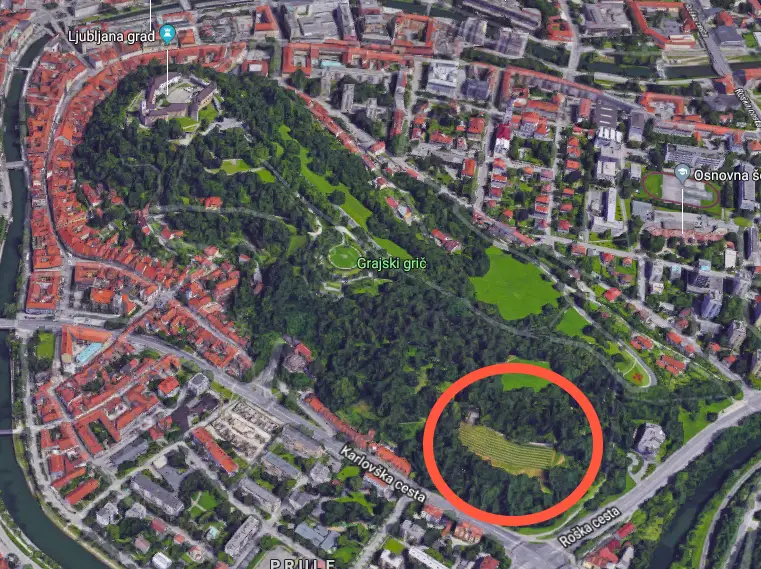
Screenshot from Google Maps, showing the location of the Castle vineyard
Ljubljana Castle
The city’s main attraction is said to be the top tourist draw in the country overall, and to my mind it earns a spot near the top just for the history and views. But beyond that the current owners, the City of Ljubljana, have laid out a varied, interesting and enjoyable programme of events, one that rewards regular revisits.
I try and get up there every Saturday morning to clear my head and move my feet on the trails, and never tire of that end of the hill. At the other end, where the Castle sits, there’s a lot more than fresh air on offer. There are guided tours, restaurants, a café, Castle museum, puppet museum, a Watchtower you can climb to the highest point in the city, art shows, dances, live music, movies under the stars, festival days and more – enough to reward multiple trips up the hill through the year. All of these activities and events can be found on the Castle website, while on TSN you can see “25 things to know about Ljubljana Castle” here, and “Ten Ways to Enjoy Ljubljana Castle” here.
Museums and galleries
Most public galleries and museums are closed on Mondays, although not the National Museum, and - as noted at the start
Cankerjev dom – A free to see show called Subterranean Worlds, showing cave photography, runs until June 16th.
Plečnik's desk. Photo: JL Flanner
Plečnik’s House is worth a visit if you want to learn more about the architect who gave Ljubljana much of its character, and it's also in a really nice part of town, Trnovo, just a short walk or cycle upriver. Read about our guided tour here.
Balassi Institute – The Hungarian culture centre hasInterlacement – exhibition of Éva Farkasvölgyi and Žiga Okorn, showing tapestries and paintings on until June 14th.Free to enter, this venue is next to a Spar and Hofer, and not far from Dragon Bridge, and always has something interesting going on. Learn more here.
City Museum – The Museum in French Revolution Square an interesting permanent exhibition on the history of Ljubljana, from prehistoric times to the present day, with many artefacts, models and so on that bring the story alive.You can read about my visit here.
The Faces of Ljubljana in the City Museum. Photo: JL Flanner
International Centre of Graphic Art – There must be something on here, but in the main the place will be getting ready for the big Biennal, starting 7 June.
MAO – The Museum of Architecture and Design has much of what you'd expect, along with some temporary shows and a good cafe. On until 19 September is a show called Creators, on contemporary Slovenian fashion and textile design, which is being promoted with the following image.
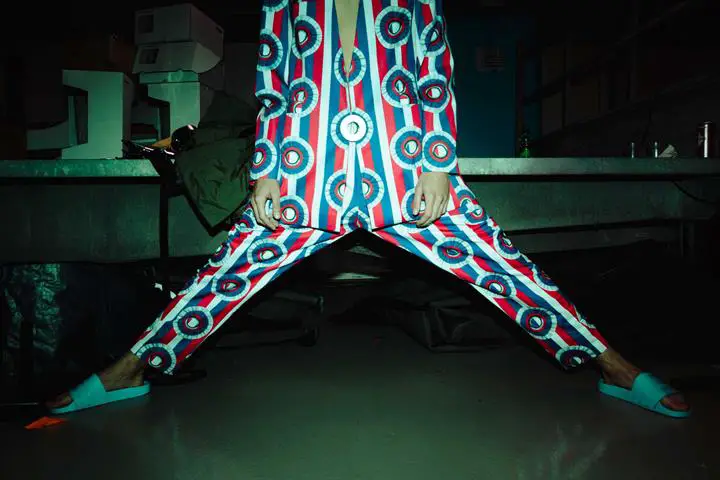
Photo: Urša Premik
Moderna galerija – The main branch of this gallery, to be found near the entrance to Tivoli Park, has a good collection of modern art, as well a nice café in the basement. Opening Thursday, April 25th, 20:00, The Visual Arts in the Kingdom of Yugoslavia, 1929–1941, which then runs until September 15th 2019. This offers “an overview of painting, sculpture, printmaking, drawing, photography, and film from the time the king's dictatorship was set up (6 January 1929) to the beginning of World War II on Yugoslav soil (April 1941)” - you can read more about it here. The museum's Metelkova branch also has a big new show, runing until at least September 2019, an the art of the Non-Aligned Movement, with an example shown below.
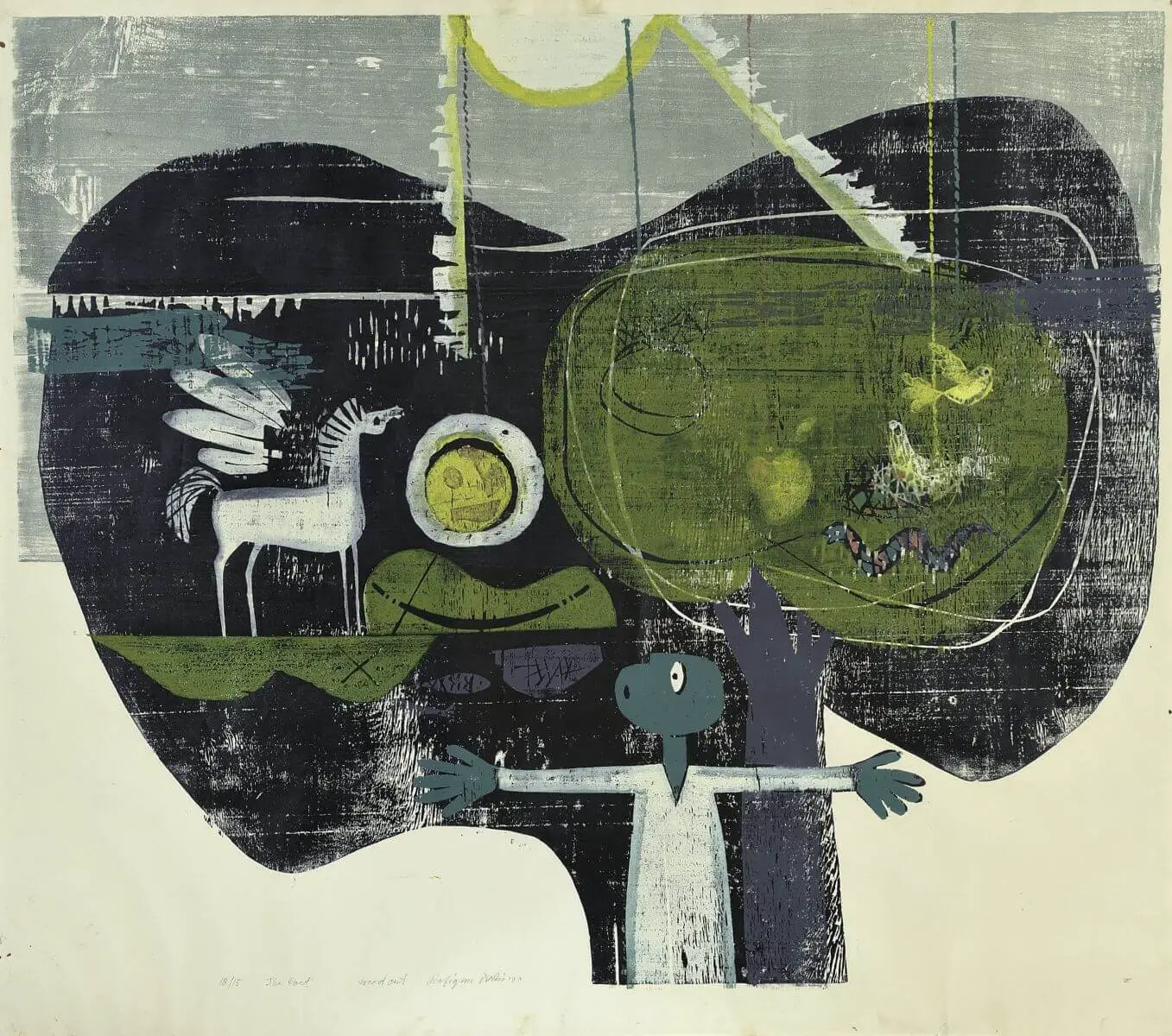
Rafikun Nabi: Poet, 1980, print, 96.5 x 110 cm. Courtesy of the Contemporary Art Center of Montenegro. On display at the Metelova branch of the Moderna galerija
National Gallery – The country’s main gallery has “the best” of what’s on offer from the Middle Ages to non-contemporary modern visual arts, and is in a great location for exploring other areas, just by Tivoli Park and opposite the main branch of the Moderna galerija. You can read about our visit to the room containing sacred art from the Middle Ages here.
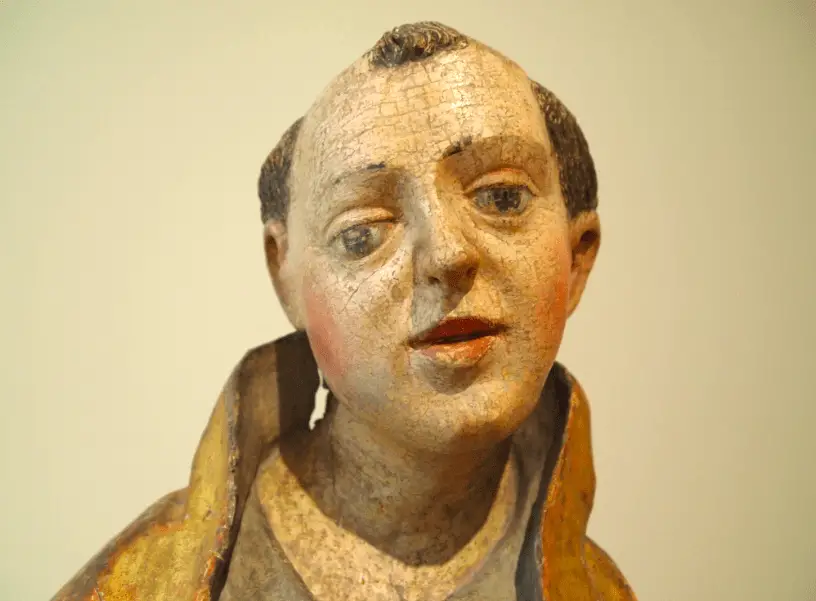
JL Flanner
The real Robba Fountain can be found in the entrance to the National Gallery - the one you see in the Old Town is a genuine fake, as seen below and reported here.
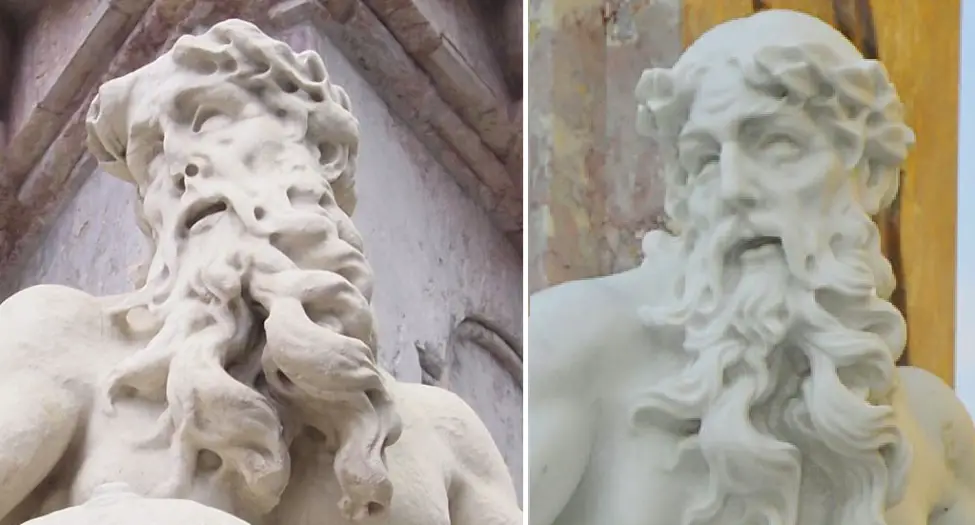
Photo: JL Flanner
National Museum of Slovenia – There’s plenty to see in the permanent collection here, from Roman times, Egypt and more. Meanwhile, the museum's Metelkova branch, located between one branch of the Moderna galerija and the Ethnographic Museum has some rooms on Church art, furniture and weapons, with the latter including more guns than you'll see anywhere else in town, and quite a thrill if coming from a nation where such objects are not household items.
Natural History Museum – On until the end of June 2019 is Our Little Big Sea, which takes a look at the oceans.
National Museum of Contemporary History - Tucked away in park Tivoli, in addition to his permanent collection will be showingIn Search Of Freedom: 1968-2018 until 16 August.
Slovene Ethnographic Museum – The museum currently has a temporary show on Bees and Beekeeping, on until June 16 2019, as well two permanent exhibitions. One of these is called Between Nature and Culture, and has a great collection of objects from Slovenia and around the world, well worth the trip up to the third floor to see it (as recounted here). From April 18 until October 19 (2019) you can also see a show calledShamanism of the Peoples of Siberia, from the Russian Museum of Ethnography, Saint Petersburg. The place is located near the newer branch of the Moderna galerija and Metelkova. You can read about this fascinating show here.
Union is "the Ljubljana beer", but now both it and Laško are owned by Heineken. There are many local brews on offer around town, though, if you want to explore IPAs, stouts, wheatbeers, sours and so on Photo: JL Flanner
Union Experience – The Ljubljana-based brewer has a museum showing the history of the company, with the ticket also including access to part of the factory and a few samples of the product. You can read about our visit here.
Volčji Potok Arboretum - Running until 3 November you can see a large collection of cacti here.
It's not a formal museum, but if you're interested in "Yugo-stalgia" then you'll enjoy a trip to Verba, a small, privately run space that's crammed with objects and pop culture items from the era, and is conveniently located at the start of one of the short walks to the castle. It's also a great place to take pictures, if you leave a donation, and you can read more about it here.
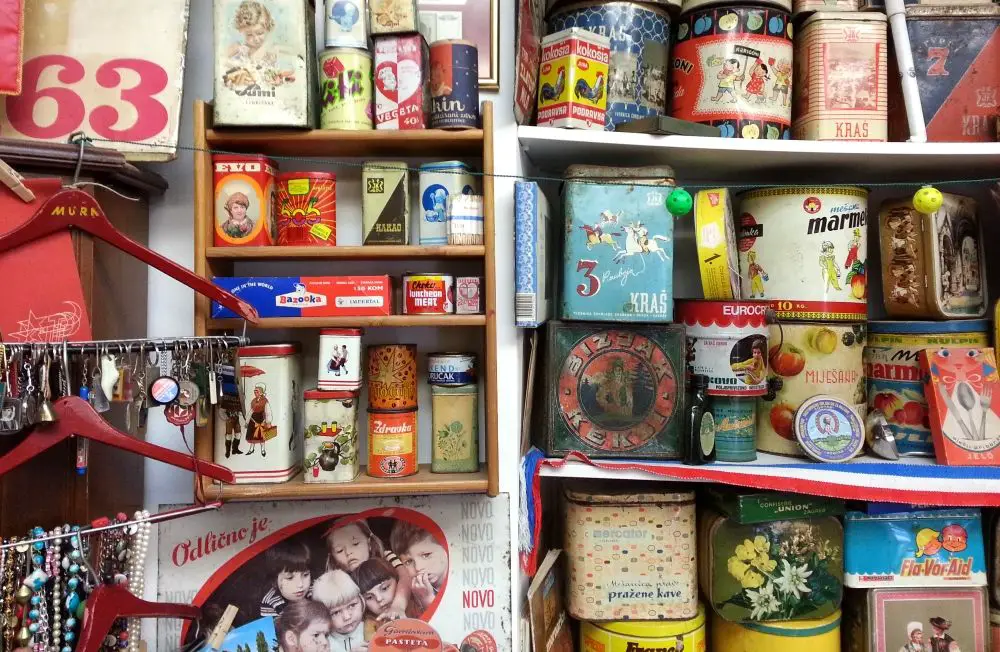
Verba. Photo: JL Flanner
Alternative Ljubljana isn't a museum or gallery, as such, but instead turns the city streets into a museum and gallery. Learn more about their tours of street art, history and LGBT Ljubljana here.
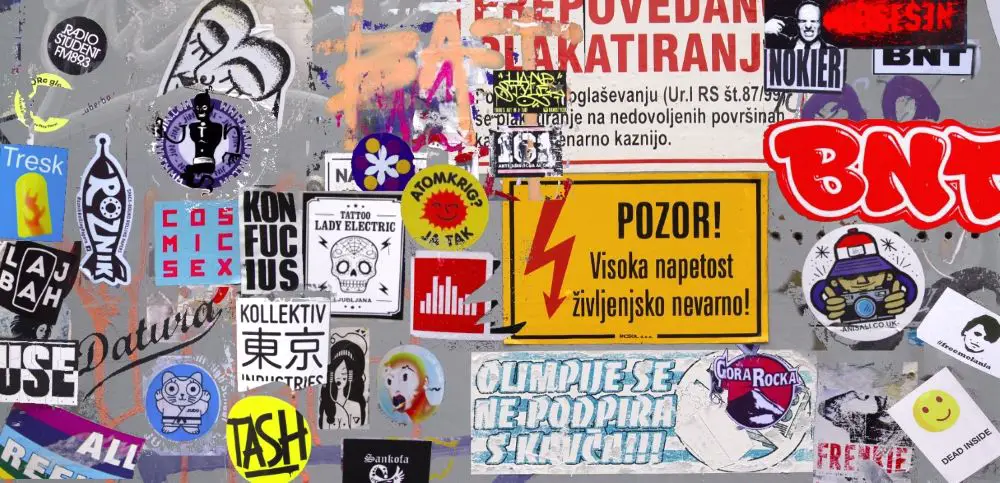
Photo: JL Flanner
Other things to do in Ljubljana
Learn more about Ljubljana with "25 things to know about Slovenia's green city of dragons", or take a look at our guide to spending from four to 48 hours here.
Open Kitchen brings market stalls selling food and drink from some of the best restaurants in town every Friday, from 11am to 11pm, in the square between the cathedral and the river - just follow your nose and the crowds. Read more about it here.
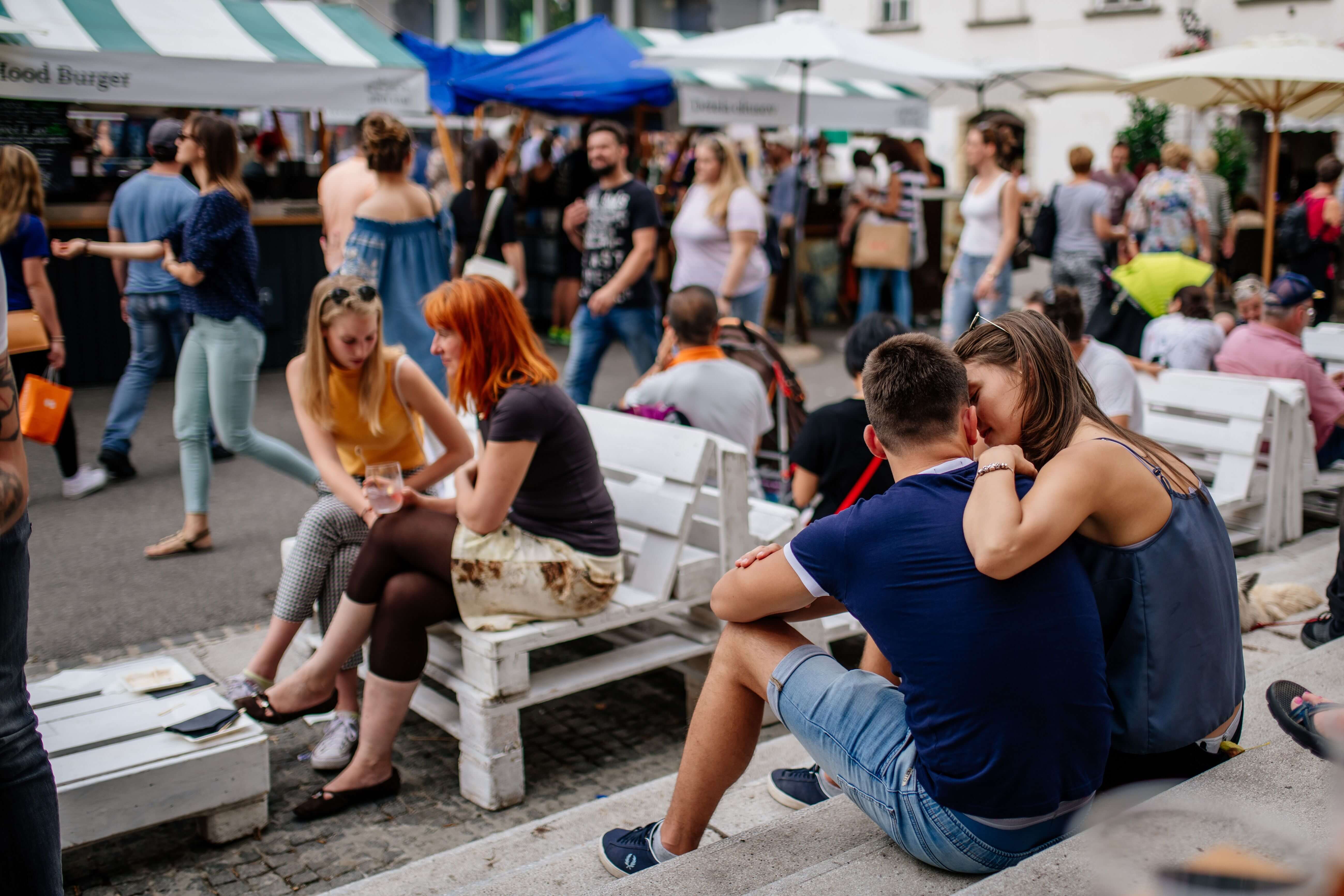
Photo: Open Kitchen
If you'd like to spend an evening painting with others, then take a look at Design with Wine, which organises painting parties on Trubarjeva cesta,
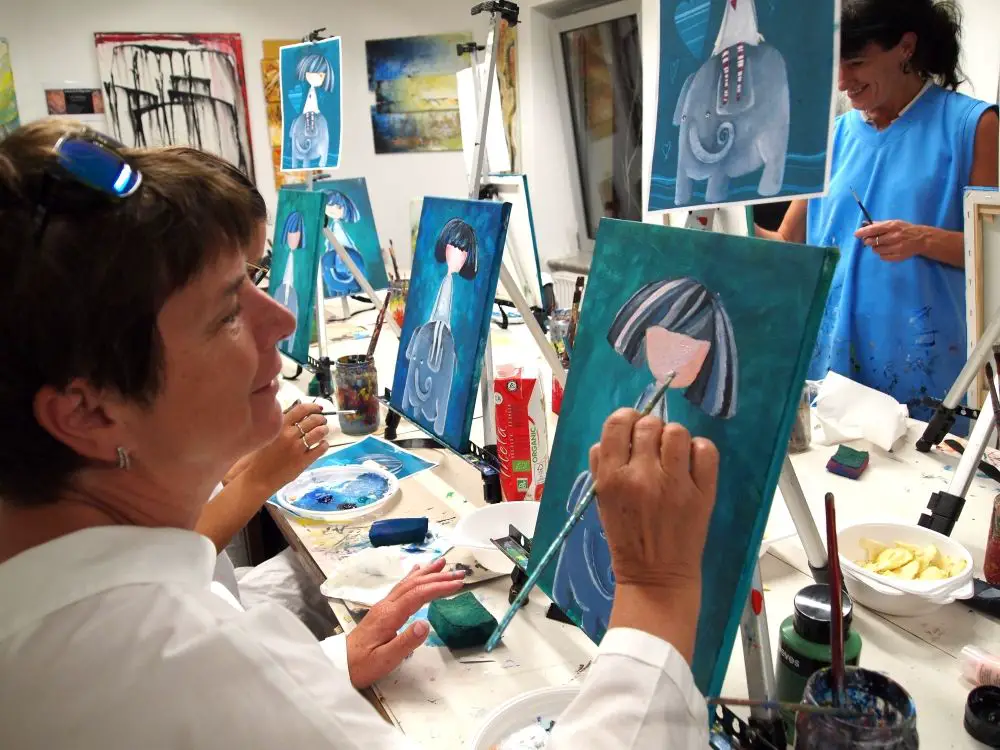
If you want to see some antiques, then check out the wonderful Antika Carniola, as discussed here. The man behind it, Jaka Prijatelj, has a fine eye for life on this street, as you can see on his Facebook account.
Photo: JL Flanner
If you’re in town and want to go jogging or walking in nature, why not take another look at the Castle, with a brief guide to the trails here. If you want something bigger, head to Tivoli Park.
And if you're bored with the Old Town, why not take a walk, cycle or boat ride to nearby Špica and enjoy the riverside life. Learn more about that here.
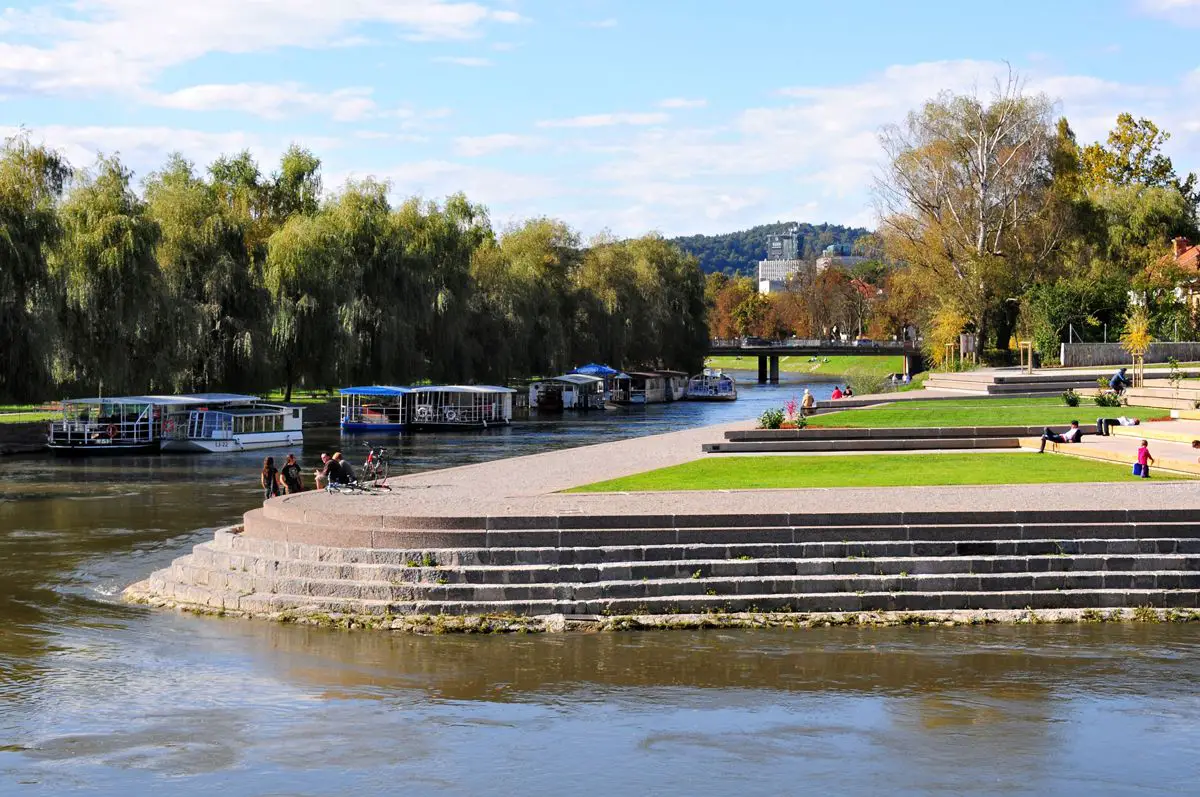
visitljubjana.si
![]()
maxpixel.net, public domain
Want to stretch and breath? Then check out our list of drop-in yoga classes for tourists, visitors and the uncommitted. If you're heading to the coast, check out our interview with a yoga teacher who offers breakfast sessions there, while if you're staying in town (or nearby) and want to try some "family yoga" then you can learn more about that here and maybe get your kids to calm down a moment or two.
Prefer to have someone else stretch you? The check out the totally legit massages you can get from Sense Wellness - either in one of their spas or in you home, office or hotel. (And - to repeat - these are legit and non-sexual in nature)
There are some golf courses near Ljubljana, but even ones further away are not far, as seen in our list of all the golf courses in Slovenia.
![]()
Photo: maxpixel.net, public domain
Daytrips
Most of Slovenia is only a few hours from Ljubljana, and you can easily visit Lake Bled, Lipica Stud Farm, Postojna Cave, Predjama Castle, the coast and other locations, while if you'd like to take a photo of from that bench in Bled, then you can learn how to get there here. If you’re looking for something more ambitious, then check out our recent guide to the 17 members of the Association of Historical Towns of Slovenia. We've also written guides on spending from four to 48 hours in Bled and Piran.
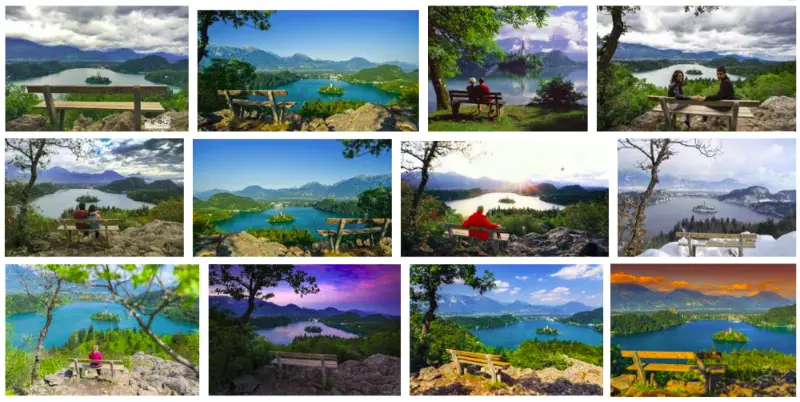
Photo: Google Image Search
Getting around & miscellaneous
If you want to get a Ljubljana Tourist Card, which gives you travel on the city buses and entry to a lot of attractions, then you can read more about that here, and if you want to use the bike share system, as useful for visitors as it is for residents, then you can learn more by clicking this. Visitors with reduced mobility will be pleased to find that downtown Ljubljana is generally rated as good with regard to accessibility, and that there’s a free, city-sponsored app called Ljubljana by Wheelchair highlighting cafés, attractions and so on with ramps, disabled bathrooms and Eurokey facilities, which you can read about and download here. Manual wheelchair users can also borrow, for free, an attachment that will motorise their equipment, as reported here.
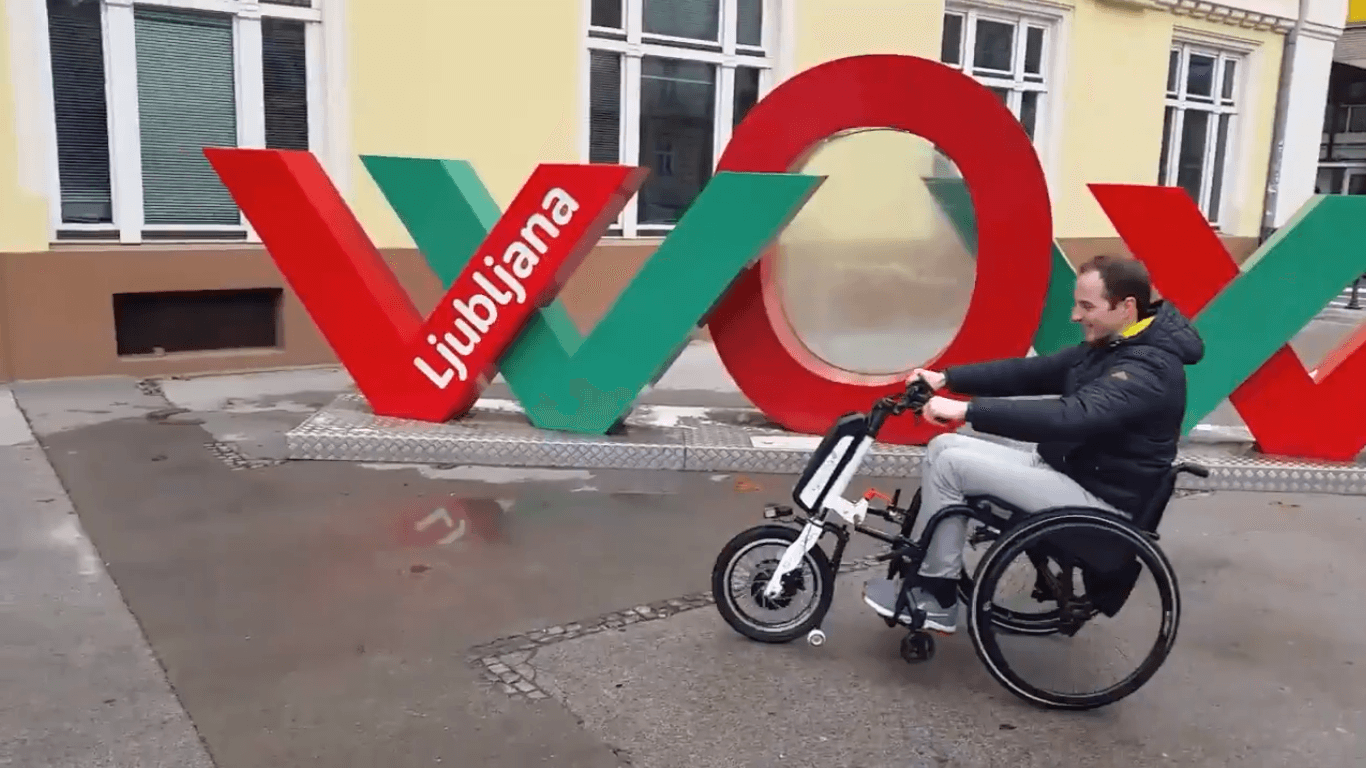
Screenshot from a Twitter video
If you’re driving into town and don’t know where to part, our guide to how to park in Ljubljana is here.
There aren't many places to eat after midnight, and most of them are by the train station, as reported here.
Want / need cigarettes but the stores have closed? Here's an incomplete list of bars downtown that will satisfy your craving for the demon weed. While if you’re having trouble with the ATMs then here’s a guide to the Slovene you’ll see on screen. If you get a hangover then find out where to get paracetamol (and prescription drugs) in Ljubljana here, while details on emergency birth control can be found here.
Ljubljana is a small and relatively safe city, but if need to contact the police then there’s a special number for foreigners, and that’s 113.
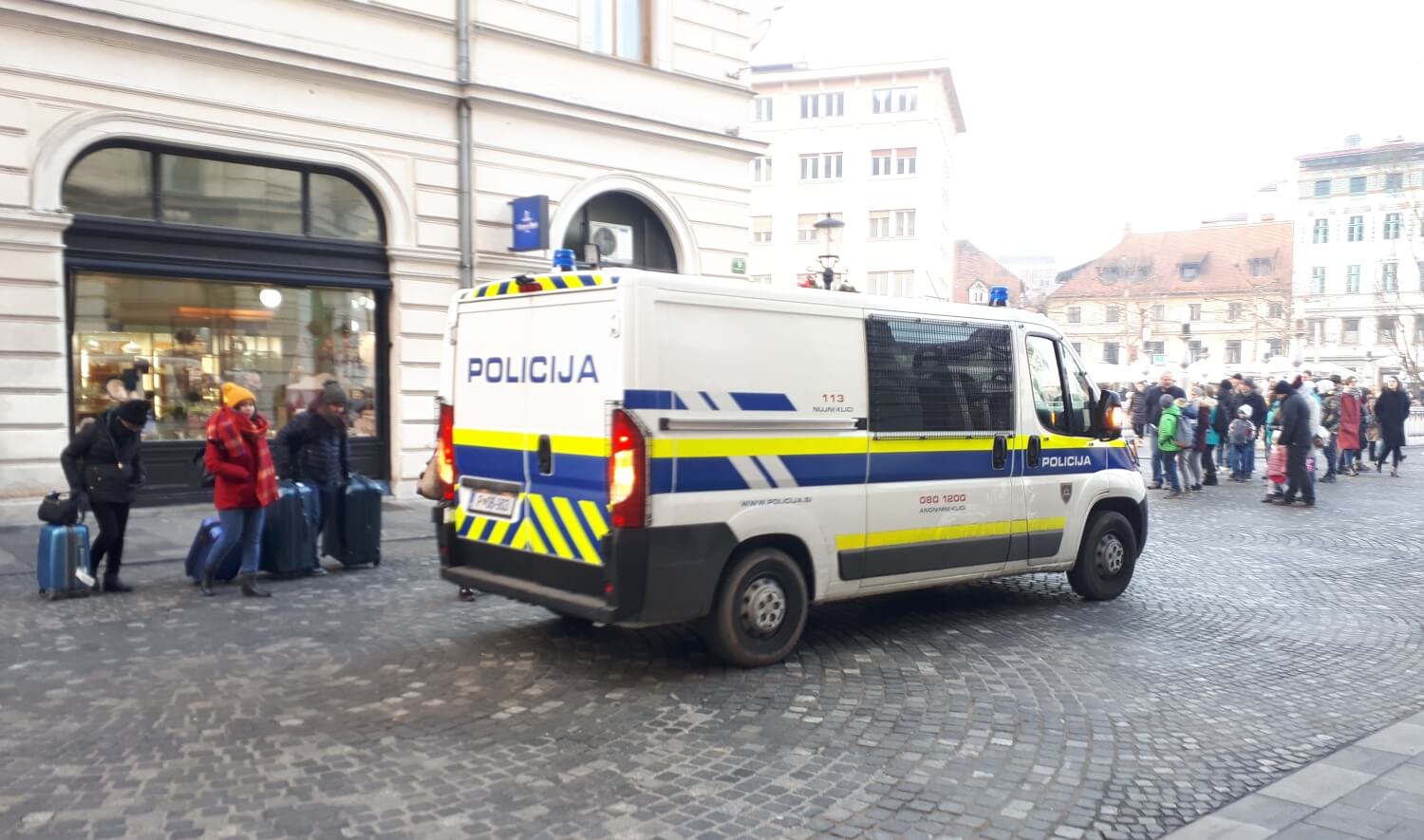
Photo: JL Flanner
Keep up with the daily news in Slovenia by checking the morning headlines here
This summary is provided by the STA
MONDAY, 20 May
LJUBLJANA - Days of Latin America and Caribbean, an international conference held under the auspices of the Bled Strategic Forum; until 26 May.
LJUBLJANA - Swiss Parliament Speaker Marina Carobbio Guscetti will hold talks with Speaker Dejan Židan, President Borut Pahor, Prime Minister Marjan Šarec and National Council President Alojz Kovšca on day two of her visit.
LJUBLJANA - The National Assembly will start its plenary with a Q&A session with Prime Minister Marjan Šarec.
BRUSSELS, Belgium - Maj-Gen Alenka Ermenc, the chief of the general staff, will attend the annual EU-NATO conference.
BUCHAREST, Romania - Environment Minister Simon Zajc will attend an informal session of the EU's Environment Council.
GENEVA, Switzerland - Health Minister Aleš Šabeder will attend a meeting of the World Health Organisation's (WHO) General Assembly.
LJUBLJANA - The parliamentary Foreign Policy Committee will discuss the ratification of an agreement on employment of Serbian citizens in Slovenia.
LJUBLJANA - The programming council of RTV Slovenija will set the guidelines of the public broadcaster's programme in 2020.
LJUBLJANA - The Week of Italian Film will open at the Slovenian Cinematheque.
LJUBLJANA/ROME, Italy - Several events will be held in Slovenia to mark World Bee Day, while Agriculture Minister Aleksandra Pivec will attend a ceremony at the Food and Agricultural Organisation.
TUESDAY, 21 May
ŠIBENIK, Croatia - President Borut Pahor will hold three-way talks with Austrian counterpart Alexander Van der Bellen and Croatia's Kolinda Grabar-Kitarović in the framework of a three-country initiative known as the Trilateral.
LJUBLJANA - The National Assembly will resume its session by discussing the opposition-sponsored bill to set up a national demographic fund.
LJUBLJANA - The opposition Democrats (SDS) will host a debate on their proposal for the setting up of a national demographic fund.
LJUBLJANA - The Chamber of Commerce and Industry (GZS) will vote on whether to give president Boštjan Gorjup a second term.
LJUBLJANA - Annual general meeting of Sava Insurance Group.
LJUBLJANA - The Education Ministry will present the results of a study on the workload of primary school children.
MARIBOR/LJUBLJANA - Druga Godba, a festival of world music; until 25 May.
LJUBLJANA - German trio Die Ärzte will perform in Kino Šiška.
LJUBLJANA - A gala concert will be held at the Cankarjev Dom arts centre to mark the 100th anniversary of the Slovenian ballet.
LJUBLJANA - Early voting will start ahead of the EU election.
WEDNESDAY, 22 May
BERLIN, Germany - Foreign Minister Miro Cerar will hold talks with German and Portuguese counterparts as part of preparations for presidency of the EU.
LJUBLJANA - The National Assembly will discuss changes to the health care and health insurance act.
LJUBLJANA - The parliamentary commission investigating the financing of political parties will meet behind closed doors.
LJUBLJANA - The Slovenian-German Chamber Commerce and Industry will host an event to present the opportunities for Slovenian companies in Germany.
PORTOROŽ - Prime Minister Marjan Šarec will address a Microsoft NT conference dedicated to artificial intelligence.
ROGAŠKA SLATINA - The Slovenian Tourism Board and the Slovenia Green Consortium will host Green Day of Slovenian Tourism, the annual conference promoting sustainable tourism.
LJUBLJANA - The National Culture Council will present statistics on the achievements of Slovenian artists abroad.
THURSDAY, 23 May
LJUBLJANA - The National Assembly will discuss changes to the energy act.
LJUBLJANA - Finnish President Sauli Niinistö will start a two-day official visit by meeting his host President Borut Pahor and Prime Minister Marjan Šarec.
LJUBLJANA - Weekly cabinet session.
BRUSSELS, Belgium - Culture Minister Zoran Poznič and Education Ministry State Secretary will attend separate sessions of the EU's Education, Youth, Culture and Sport Council.
LJUBLJANA - The public broadcaster TV Slovenija will host two EU election debates, respectively with the candidates of parliamentary and non-parliamentary parties.
LJUBLJANA - The Chamber of Commerce and Industry (GZS) will host a debate on the minimum wage.
NOVO MESTO - The drug maker Krka is expected to release Q1 results.
LJUBLJANA - The Statistics Office will release the consumer confidence index for May.
KOPER - The logistics company Intereuropa will release its unaudited business report for the first quarter of 2019.
FRIDAY, 24 May
LJUBLJANA - NLB bank is expected to report Q1 results.
LJUBLJANA - The Statistics Office will release business sentiment data for May.
LJUBLJANA - The last day of the EU election campaign.
MARIBOR - The Maribor opera ensemble will put on an Opera Night in the city park.
SATURDAY, 25 May
LJUBLJANA - Some of the best climbers in the world will compete in Triglav the Rock, an international bouldering event that is part of the IFSC International Climbing Series.
NOVA GORICA/GORIZIA, Italy - Slovenia's Nova Gorica and Italy's Gorizia will formally announce their joint bid for the title of European Capital of Culture in 2025.
LJUBLJANA - Election blackout will set in ahead of the EU elections.
SUNDAY, 26 May
LJUBLJANA - Elections to the European Parliament.
STA, 18 May 2019 - Slovenia is gearing up to celebrate the second international World Bee Day, designated by the UN on Slovenia's own initiative, with the main event marking the holiday taking place in Ravne na Koroškem (N) on Saturday. Several exhibitions and workshops will also be organised.
The international day acknowledging the role of bees and other pollinators for the ecosystem is observed on 20 May, the birthday of Slovenian Anton Janša, the pioneer of beekeeping, born in 1734.
The day dedicated to honeybees was declared in December 2017 by the UN General Assembly with a special resolution, honouring the initiative and efforts for bee protection by the Slovenian government and the national Beekepers' Association.
"The declaration represents one of the greatest diplomatic achievements of Slovenia ever," the Slovenian Agriculture Ministry said ahead of the event.
It added that the main purpose of World Bee Day was to raise the awareness of the global public about the importance of bees and other pollinators for humankind in the light of efforts to eradicate global hunger.
The ministry noted that bees and other pollinators were indispensable from the economic, social and environmental aspects, and a source of income for more than two billion farmers.
They also significantly contribute to food security, prevention of hunger, preservation of diversity of ecosystems and the implementation of sustainable development goals.
But the ministry also noted that bees were increasingly endangered due to the intensive farming, diseases, mass use of pesticides and climate change.
"World Bee Day is an opportunity for experts, politicians, businesses and public to get active in preserving bees, developing beekeeping, maintaining biodiversity and planning activities which ensure the survival of bees and humans."
The main international ceremony will be held in Rome on Monday, hosted by the Slovenian Agriculture Ministry and the Food and Agriculture Organisation (FAO), featuring Minister Aleksandra Pivec and FAO Director-general Jose Graziano da Silva.
The common thread of the second World Bee Day is empowering women through beekeeping, while the ministry has also pointed to its initiative presented to the European Commission for mandatory labelling of honey mixtures and origin of honey.
The latter is something Slovenian beekeepers have been calling for, in addition to the fight against fake honey, lower taxes for medicines for bees and refunds of excise duties for energy they spend for transporting and caring for bees.
Boštjan Noč, the head of the Beekeepers' Association, recently said that additional efforts were needed to protect bees as they were effectively endangered. "World Bee Day has resulted in a sea of change in Slovenia and the world, but celebrations and photo shoots will not save bees."
The association has long argued bees should be classified among endangered species, with Noč stressing the animals cannot survive without human help, which requires the state changing some rules.
Beekeepers have also warned that due to the unfavourable weather, this year's harvest will be lower by more than 30% than expected.
Among the promotional activities related to World Bee Day, Slovenia plans to introduce a Golden Bee award for best and most innovative projects focused on the protection of bees and other pollinators. The award would be conferred every year or every two years by the president, with the first award scheduled for 2021.
To mark the day, the Statistics Office published some beekeeping statistics, noting that Slovenian beekeepers produced a total of 1,746 tonnes of honey last year, which is 10% above the average for the last ten years.
The average price for a kilogram of honey increased in the last ten years by 81%, reaching almost ten euros last year, according to the Statistics Office.
The record year in the last ten years was 2011, when Slovenian beekeepers produced 2,472 tonnes of honey, followed by 2013, when the production reached 2,400 tonnes.
Slovenia imported around EUR 3.5 million-worth of honey from other EU member states last year, mostly from Croatia, Hungary and Germany, while exporting around EUR 212,000, mostly to Italy.
In addition to honey, Slovenian beekeepers also export Carniolan honey bees, with exports last year amounting to around EUR 47,000, mostly to the Middle East countries and Japan.
The number of beekeepers in Slovenia increased in the last ten years by 30% to around 10,100, while their number in the EU is decreasing. The area intended for bee pasture in Slovenia has also been increasing in the recent years.
In 2016, there were a total of 167,000 bee hives in Slovenia or 1.1% of the total number in the EU, with the average number of bee hives per beekeeper at 17.
There are around 20,000 sub-species of bees in the world, with the Carniolan honey bee, originating from Slovenia, being the second most widespread sub-species in the world.
All our stories on bees are here



